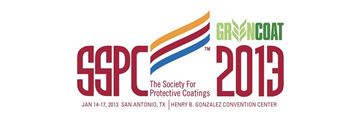In the worldwide oil and gas industry, the application of epoxy phenolic coatings has been a dominant strategy to obtain high heat resistance from coatings and to mitigate corrosion under insulation (CUI) of both insulated carbon and stainless steel pipes operating up to 392°F (200°C). These coatings, however, are sensitive to overapplication, prone to cracking, and costly to repair when damaged.
Product Number:
51218-104-SG
Author:
Vijay Datta, Mike O'Donoghue, Ian Fletcher
Publication Date:
2018
$0.00
$20.00
$20.00
In the worldwide oil and gas industry, the application of epoxy phenolic coatings has been a dominant strategy to obtain high heat resistance from coatings and to mitigate corrosion under insulation (CUI) of both insulated carbon and stainless steel pipes operating up to 392°F (200°C). These coatings, however, are sensitive to overapplication, prone to cracking, and costly to repair when damaged. Additionally, if applied below 50°F (10°C) epoxy phenolic coatings do not cure properly and can fail prematurely, and when applied close to this temperature, can impact shop heating costs, maintenance schedules, and productivity. The genesis and performance of a step change epoxy coating for high heat resistant service and CUI mitigation is investigated. Based on a novel amine epoxy technology platform this next generation high temperature coating simplifies coating specifications and is easy to apply on carbon and stainless steel pipe externals for both insulated (CUI) and non-insulated service. Tolerant of over-application, and possessing fast and subzero curing characteristics, the novel alkylated amine epoxy coating enhances shop productivity and reduces project costs, thereby eliminating several challenges seen with traditional epoxy phenolic coatings. This paper also describes another step change epoxy, a novel lining developed for the internals of tanks, pipes, vessels and railcars internals. A high film build, rapid curing, single leg spray applied modified polycyclamine cured epoxy (hereinafter MPCE), this lining was primarily developed for high temperature and high pressure immersion service in harsh oilfield services, and later for railcar internals. Aside from its high temperature resistant characteristics, the next step MPCE was formulated to possess a smooth and abrasion resistant surface with a low coefficient of friction and low surface energy, which markedly improved the flow properties of fluids and cargoes in tanks, pipes, vessels, and railcars.




